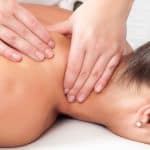A kind of inflammatory arthritis that is characterized by sudden, severe attacks of pain, redness and tenderness in joints, gout is usually described as excruciatingly painful. Most frequently affecting the joint at the base of the big toe, gout is caused by deposits of sodium urate in and around the joints. Although massage therapy has been shown to be a valuable modality for relieving many kinds of arthritis, the pathophysiology of gout puts it in a category of its own. Before massage therapists work on a client suffering from gout, they should be aware of what is beneficial and what is harmful to their clients with gouty arthritis.
More About Gout
Affecting an estimated one million people in the U.S., a majority of gout sufferers are men. Those with gout have abnormal deposits of sodium urate crystals in their joint cartilage. Sodium urate is formed from uric acid, which comes from the natural breakdown of RNA and DNA.
Uric acid in normal amounts remains dissolved in the blood, easily passes through the kidneys and leaves the body as waste. However, if the kidneys can’t transform uric acid into waste – either from too much uric acid or because they are impaired – hyperuricemia will develop. Several facts about hyperuricemia and gout include:
- Hyperuricemia can turn into a gouty attack when uric acid consolidates to form sharp crystals that accumulate in a joint.
- These uric acid crystals grind on and irritate any surrounding tissue.
- The crystals attract neutrophils, which create an extreme inflammatory response.
- The foot is the main target of gout because of the pull of gravity and the lower temperature in the foot, which aids uric acid crystallization.
Types of Gout
As mentioned earlier, hyperuricemia can be due to excessive amounts of uric acid or an inability of the kidneys to eliminate the uric acid. Sometimes, a combination of these problems exists:
- Metabolic Gout – This is when a person has normal kidney function but the body produces too much uric acid for the kidneys to keep up. This type of gout is typical of someone with a high protein and alcohol intake.
- Renal Gout – This occurs when a person’s uric acid load is normal, but the kidneys are not functioning well. This type of gout can be inherited or due to other problems like diabetes or lead poisoning.
- Metabolic and Renal Gout – When the kidneys are compromised and purine intake is high (purines are metabolized into uric acid), gout can be more severe.
Gout and Massage
Despite gout being a type of arthritis – which generally responds well to massage therapy – traditional massage therapy techniques are not usually advised. Since it involves an immune response, an acute attack of gout is a systemic kind of inflammation. Thus, an acute episode of gout is considered to be a local massage contraindication. While energetic or distal bodywork techniques could be beneficial (especially lymphatic drainage massage), direct pressure on a gouty joint could irritate and further inflame the affected area. Two additional cautions for working with clients who have gout include:
- Never apply or suggest applying ice to a gouty joint. Cold applications help precipitate uric acid crystallization.
- Those with gout have an increased risk of kidney stones or other urinary system disorders that should be ruled out prior to receiving circulatory massage. Thus, discuss massage with a client’s physician prior to administering massage therapy.
Other Tips for Gout Clients
While there are not a lot of therapeutic applications that a massage therapist can offer to clients having an acute gout episode, bodyworkers are in a prime position to be a health advocate. Good suggestions for managing gout include:
- To ease the pain during a gout attack, advise your client to rest the painful joint and consider a physician-prescribed or over-the-counter pain reliever. Because aspirin may raise uric acid levels and can worsen gout, remind your client to avoid taking aspirin.
- To keep future attacks to a minimum, suggest discussing medications for reducing uric acid buildup with his or her doctor.
- To prevent future attacks, advise dietary awareness to eliminate or minimize purine-rich foods. Some of the bigger culprits of eliciting a gouty attack are beer, red meat, organ meat, shellfish, asparagus, lentils, anchovies, sardines and poultry.
- As a preventative, there are studies that suggest drinking lots of water and dark cherry juice help reduce uric acid levels. While supplements containing Vitamin C may reduce the levels of uric acid in the blood, mega doses may do just the opposite. Thus, suggest increasing Vitamin C intake through fruit and vegetables – especially oranges.
Since gout is not that uncommon, many bodyworkers are likely to encounter clients with this painful type of arthritis. If the therapist is familiar with this condition, he or she can avoid aggravating the affected joint and help guide his or her client to better manage gouty arthritis.















